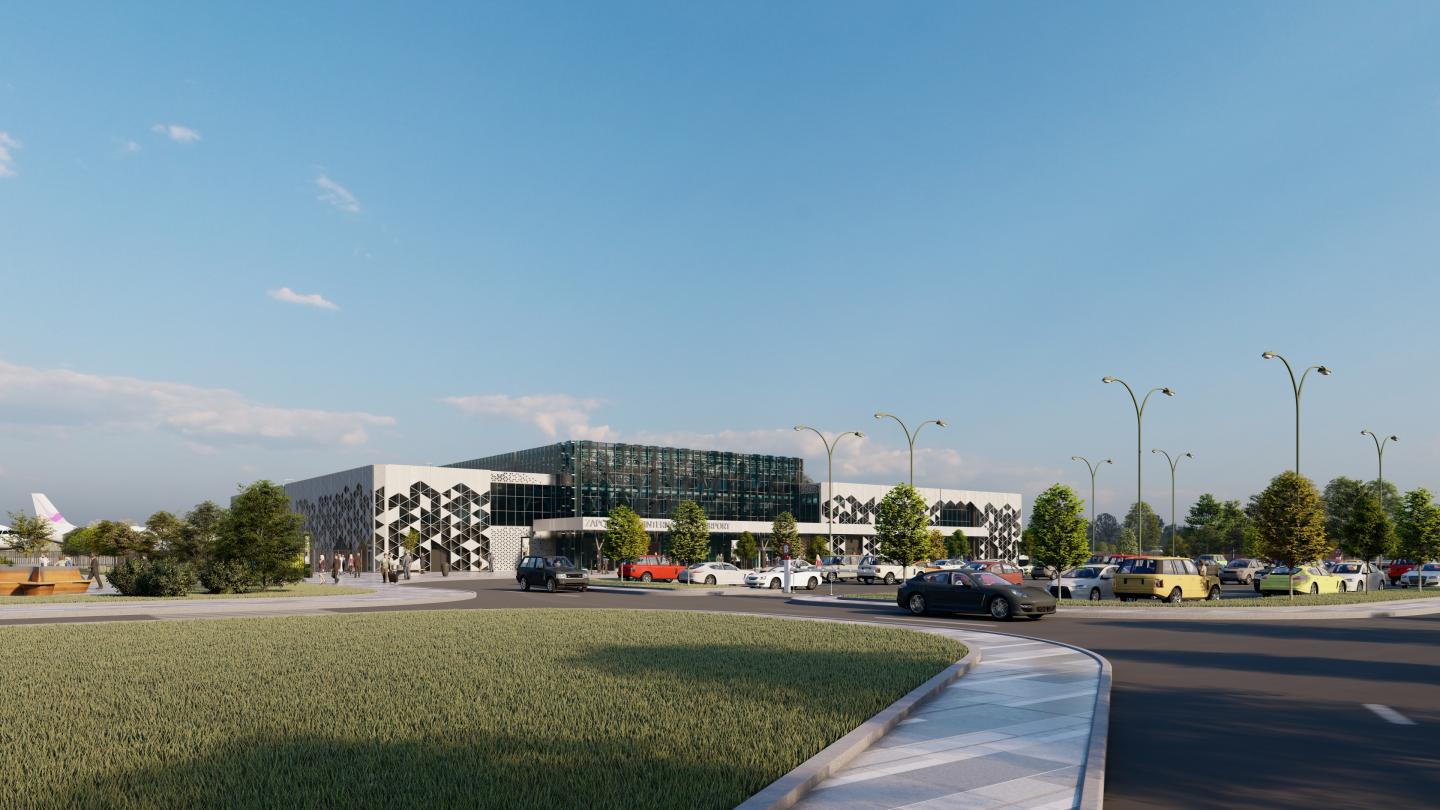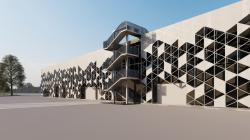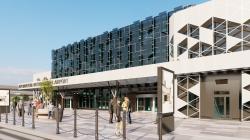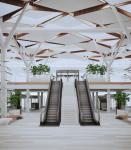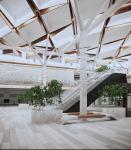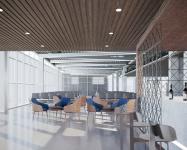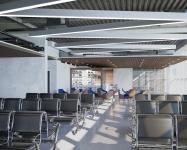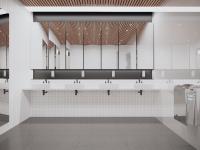The new terminal of the Zaporizhzhia International Airport has an area of 12300 square meters, created using modern BIM design technologies, taking into account bright facades, interiors and design solutions.
This project is important for the development of the whole region, as well as the country. About 3 million people live in the areas near the airport. The new terminal will create better conditions for passenger service, will increase the flow of people for doing business in the region, will allow to fly comfortably to different regions of the world, thus, bringing Ukraine closer to modern world business regions. The airport is located on the border of the city of Zaporizhzhia, with mostly flat landscapes, with a very convenient location from the city center - only 30 minutes. A new road is laid to the new terminal, additional shuttle service is started.
According to modern requirements, the new terminal meets the class A, B energy efficiency. To achieve this, a number of measures were taken: warm facade with modern Kingspan panels and Reynaers facade systems provide extra heat, insulated roof covered with membrane, providing high rates of heat and waterproofing. All engineering systems meet energy efficiency class B, the equipment is equipped with heat recuperators, air heat pumps and free-cooling systems are used in winter. The boiler house on the basis of Viessmann boilers with a capacity of 1.5 MW. The project provides a modern BMS dispatching and automation system based on Honeywell equipment, which has to control all temperature parameters, taking into account different work areas, operation of the heat station, operation of all systems of engineering support and fire protection.
The project is unique, with sufficient detail to execute the work and manufacture the elements. From the initial data there was a limit on the area of the terminal not more than 13000 sq.m and a height not exceeding 13 meters, which made it necessary to apply a compact arrangement of all engineering systems and not to lower the ceiling, but to make a spacious terminal. The object has a uniquely designed reinforced concrete frame with beams and bolts without unnecessary projections, all load-bearing metal structures are unique and used in the interior of the building. The project outlines the CC3 impact class, with a seismicity of 7 points.
Airport technology provides luggage capacity of up to 550 luggage per hour, the terminal is equipped with all fire protection equipment, takes into account the requirements of people with disabilities and equipped with the necessary medical measures. The planning solutions meet ICAO standards, and the individually designed mathematical model and the model for calculating the evacuation of people by fire were used to calculate the flow of people at the terminal, taking into account the schedule of the terminal traffic.
Uniqueness of three-dimensional planning solution:
1. The luggage compartment for throughput is transformed as needed between domestic and international in the right proportion.
2. Departure or arrival halls can be combined in case of peak traffic on one types of routes. When combining the arrival halls, another luggage strap is added, and the departures have 2 more exits to land. Combinations can be done at times when there are no domestic flights but international flights are available.
3. Airport planning is made symmetrical between domestic and international flights, allowing further expansion with minimal adjustments.
4. In the center of the terminal there is a large communication mine, which connects all floors and remains accessible to the highway for further extensions and has a throughput.
5. Landing elevators are made in such a way that work at once on 2 exits thus saving money and space.
6. The organization of logistics inside the terminal is made in such a way that the flows do not intersect at all. Even the main staff gets into their work areas bypassing the passenger area. Thanks to such logistics, the number of security control points was reduced and thus the number of personnel was reduced.
Design work, work maintenance, interior design were done in a single BIM model, using BIM Management technologies, building model was executed, which is a complete digital counterpart, with master plan, external networks, interiors. For the sake of providing additional graphic materials, video materials were made, besides renders, as well as a complete, active VR model with basic elements of architecture, design and engineering networks, which allowed the team of the customer and project office to understand more clearly the future result.
The copyright for the project belongs to the chief architect of the project Oleksiy Agafonov and LLC "UVT GROUP".
2016
0000
-
UVT Group
Chief Architect: Agafonov Aleksey
